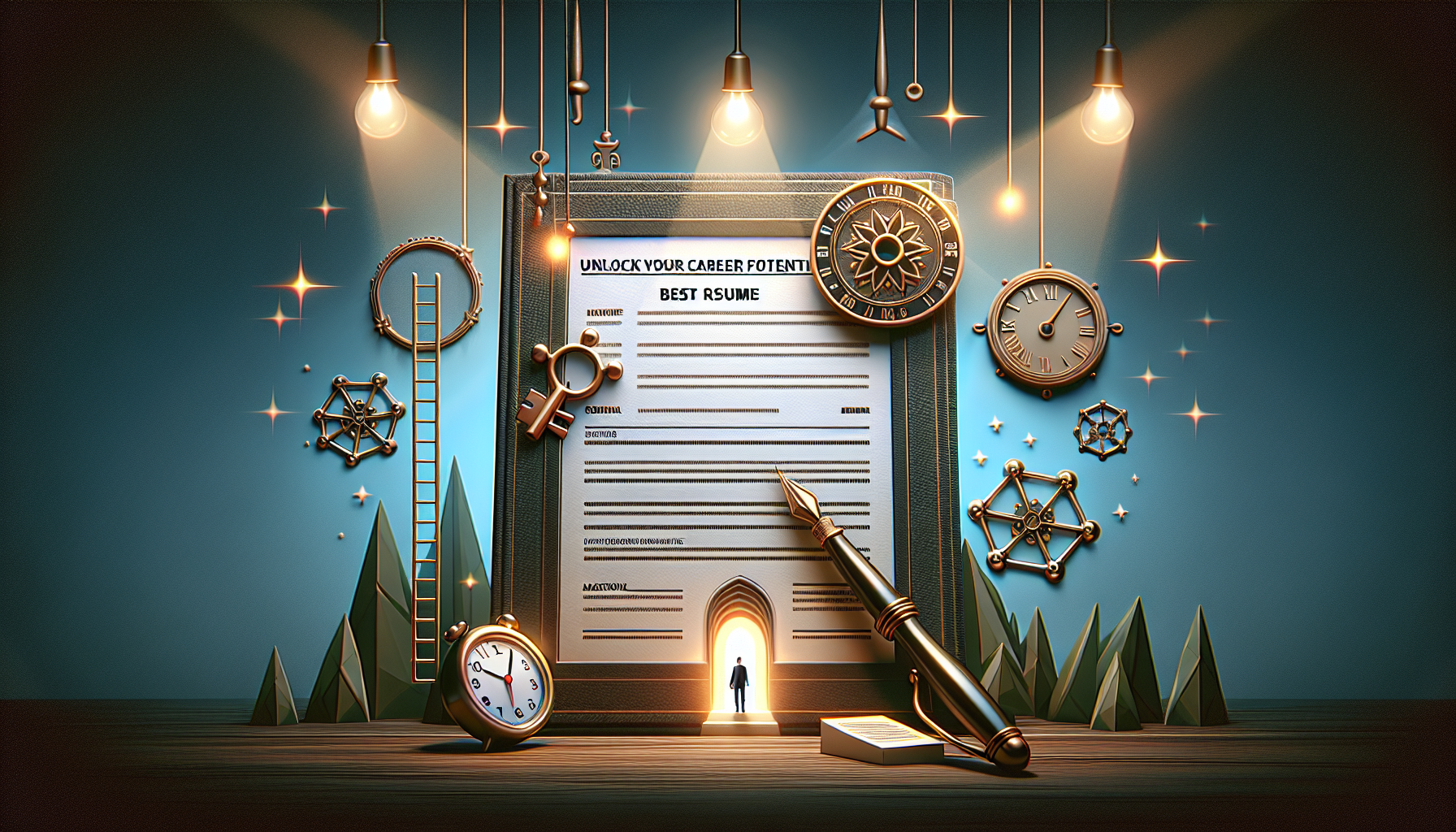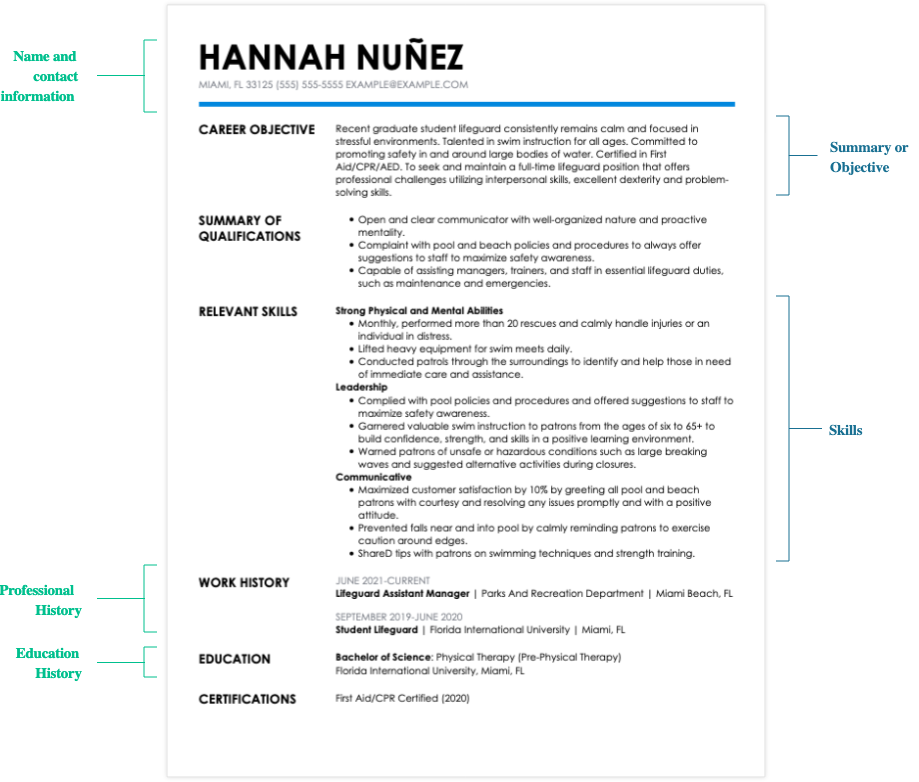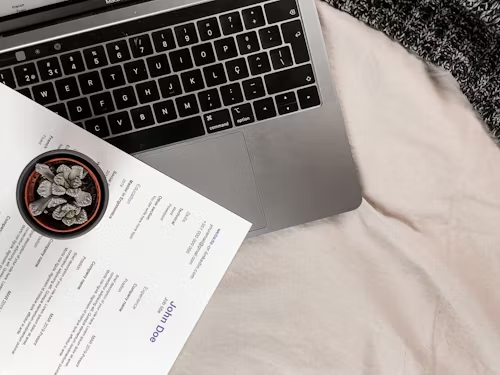Unlock Your Career Potential: Mastering the Best Resume Format in 2023

Introduction
The right resume can make all the difference. It's your personal brand, your professional narrative, and often the first impression a hiring manager gets of you. With advancing technologies and shifting job market trends, mastering the best resume format is essential to stand out. As we embark on 2023, certain formats can showcase your qualifications better than others. This guide is crafted to help you select the most impactful resume format, tailored to showcase your unique skills and experiences to prospective employers. Let's refine your job-seeking tools and open new doors to career opportunities.
Let's upgrade your job-hunting tools and unlock exciting career possibilities together!
Understanding Resume Formats
The structure of your resume must resonate with your career narrative and professional aspirations. Here are the various resume formats you could choose from:
The Chronological Resume Format
The chronological resume is a classic format that has stood the test of time due to its simplicity and effectiveness. It presents your work history in a clear and organized manner, beginning with your most recent position and moving backwards.

This type of resume is particularly well-suited for individuals with a strong and progressive work background, as it allows for a cohesive storytelling of your career trajectory. Recruiters often find this format highly intuitive and easy to follow, enabling them to quickly grasp the evolution of your professional experience.
Benefits of a Chronological Resume
- Easy to Follow: A chronological resume presents your work experience in a clear and easy-to-follow format, starting with the most recent job first.
- Highlights Career Progression: It showcases your career progression and growth over time, demonstrating your increasing level of expertise and responsibilities.
- Preferred by Employers: Many employers prefer chronological resumes as they provide a straightforward timeline of your work history, making it easier for them to assess your qualifications.
- Emphasizes Stability: It can highlight your stability and commitment to previous positions, which can be reassuring to potential employers.
- Showcases Relevant Experience: By listing your work experience in reverse chronological order, you can emphasize your most recent and relevant accomplishments and skills.
- Easier to Tailor: It is easier to tailor a chronological resume to a specific job by focusing on relevant experience and achievements that align with the job requirements.
When should you choose a chronological resume over other formats?
A chronological resume is typically the best choice when you have a strong and consistent work history that aligns well with the job you are applying for. This format highlights your career progression, showcasing your most recent and relevant experience first. It is especially effective when you want to demonstrate a clear and linear career path or when you want to show steady growth in your field.
Employers often prefer chronological resumes because they can easily see your work history and how your experience has evolved over time.
Tips
Enhancing a chronological resume in 2024 means interweaving your accomplishments with quantitative metrics that provide tangible evidence of your impact. Incorporate modern design elements like subtle color highlights or a clean, professional font to ensure readability. Additionally, strategically use industry-specific keywords throughout your resume to improve its chances of passing through Applicant Tracking Systems (ATS).
The Functional Resume Format
The functional format for resumes diverges from the traditional chronological layout by placing a greater emphasis on your skills and experiences. Instead of focusing on dates and timelines, this format organizes your qualifications into distinct skills categories, highlighting your expertise in specific areas.

This approach is particularly beneficial for individuals with non-linear career trajectories, such as career changers, those with substantial employment gaps, or individuals who have pursued freelance work. By showcasing your skills in a structured manner, you can effectively demonstrate your capabilities and suitability for a range of positions.
Benefits of a Functional Resume Format:
- Highlights Skills: A functional resume allows candidates to emphasise their skills and qualifications at the forefront, making it easier for employers to quickly identify relevant strengths.
- Downplays Work Gaps: This format is effective for individuals with gaps in their work history as it shifts the focus away from chronological employment details.
- Career Changers: Ideal for those changing careers as it allows them to showcase transferable skills and relevant experiences without being restricted by a traditional chronological layout.
- Showcases Achievements: Enables candidates to showcase specific achievements and accomplishments in a more prominent manner, which can be beneficial for those with a diverse work history.
- Tailored to Job Requirements: Can be customised to align with specific job requirements, making it easier to tailor the resume for different positions and industries.
- Concise and Focused: Helps in presenting a concise and focused overview of one's qualifications, making it easier for recruiters to quickly assess the candidate's suitability for the role.
When should you choose a functional resume over other formats?
A functional resume is ideal for career changers, those with employment gaps, or individuals with diverse skills that don't fit a traditional chronological format.
It allows you to highlight relevant abilities and accomplishments tailored to the job you seek, aiding hiring managers in understanding how your skills match the role's needs.
Infographic and Non-Traditional Resumes
In the realm of creative professions, traditional resume formats often fall short in capturing the essence of one's unique talents and experiences. Infographic resumes, a popular alternative, go beyond the confines of conventional structures by incorporating design elements and visuals.

These visually striking resumes serve as a canvas to creatively showcase an individual's professional skills, work experience, and expertise in a dynamic and engaging manner. Non-traditional resumes come in a myriad of formats, each bearing the hallmark of innovation and individuality, all with the shared objective of making a bold, artistic statement that sets the candidate apart from the crowd.
Benefits of Infographic and Non-Traditional Resumes:
- Visual Appeal: Infographic and non-traditional resumes are visually engaging, making them stand out to recruiters among a sea of traditional resumes.
- Showcasing Creativity: These formats allow job seekers to showcase their creativity and design skills, giving them an edge in industries that value innovation.
- Highlighting Key Information: Infographics can effectively communicate key information such as skills, experience, and achievements in a concise and easy-to-digest manner.
- Increased Memorability: The unique format of infographic and non-traditional resumes can make a lasting impression on recruiters, increasing the chances of being remembered.
- Differentiation: Using these unconventional formats sets candidates apart from the competition and demonstrates their willingness to think outside the box.
- Demonstrating Tech-Savviness: Infographic and non-traditional resumes can showcase an individual's proficiency in graphic design tools and technology, which is increasingly valued in many industries.
When should you choose a Infographic and Non-Traditional resume over other formats?
Consider the specific industry and job role you are targeting.
Infographics are visually appealing and can effectively showcase your creativity and design skills, making them suitable for industries such as graphic design, marketing, or creative fields.
On the other hand, Non-Traditional resumes offer a unique approach to presenting your qualifications and experience, which can be advantageous in roles that require out-of-the-box thinking or unconventional skills.
Moreover, the decision to choose an Infographic or Non-Traditional resume should also take into account the company culture and preferences of the hiring manager. Some organizations may appreciate the creativity and innovation demonstrated through these formats, while others may prefer more traditional resumes for their professionalism and readability.
Ultimately, the choice between an Infographic or Non-Traditional resume versus other formats should align with your personal branding, the job requirements, and the company culture to make a compelling impression on potential employers.
How To Target Your Resume
When tailoring your resume for a specific job opportunity, it is important to customize your resume to highlight the skills and experiences that are most relevant to the position. By carefully reviewing the job description and identifying key qualifications and requirements, you can ensure that your resume effectively showcases your suitability for the role.

One effective strategy is to use keywords and phrases from the job posting in your resume. This can help your resume get past automated resume screening systems and demonstrate to the hiring manager that you have the specific skills and experience they are looking for.
Additionally, you should consider rearranging the order of your resume sections to prioritise those that are most relevant to the job. For example, if the position requires strong project management skills, you may want to move your project management experience to the top of your resume.
By taking the time to target your resume for a specific job opportunity, you can significantly increase your chances of landing an interview and ultimately securing the position.
Why Target Your Resume
Targeted resumes can significantly impact your job search process. By tailoring your resume to specific job openings, you can effectively showcase your relevant skills and experiences that match the requirements of the position. And, lets face it…No body wants to be another John Doe…

This personalized approach demonstrates to employers that you have taken the time to understand their needs and have the qualifications they are looking for. As a result, targeted resumes can make a difference in capturing the attention of hiring managers and increasing your chances of securing interviews.
Because targeted resumes demonstrate a high degree of customization, they show recruiters that you have a keen interest in the role and a deep understanding of what the position entails. This focus can differentiate you from the pool of applicants who send identical resumes to every employer.
Resume Formatting Tips for 2024
As we continue to observe the ongoing digitization of the recruitment process, it becomes increasingly essential to remain up-to-date with the latest formatting trends. Here are some succinct yet valuable tips to guide you through the upcoming year:
- Maintain a Concise Resume: Aim to keep your resume succinct, ideally no longer than two pages to ensure recruiters can quickly grasp your key qualifications and experiences.
- Embrace ATS-Compatible Formatting: Prioritize employing clean and ATS-compatible formatting in your resume. Given that many recruiters rely on Applicant Tracking Systems (ATS) to screen resumes, using standard section headings and avoiding intricate elements such as tables or columns can enhance the readability and searchability of your document. We have a great article on ATS-Compatible Formatting and it's quirks.
- Opt for Professional Fonts: Select a professional font like Arial or Calibri and ensure the font size falls within the range of 10 to 12 points. Consistency in font style throughout your resume can contribute to a polished and cohesive presentation.
- Incorporate Subtle Color Accents: To infuse a touch of modernity into your resume, consider incorporating subtle color accents. However, it is crucial to strike a balance between creativity and readability to ensure that the overall visual appeal enhances rather than detracts from the content.
- Include Hyperlinks to Online Profiles: Enhance your professional online presence by including hyperlinks to platforms such as LinkedIn within your resume. Be certain that these links are current and lead to updated profiles, providing recruiters with easy access to additional information about your professional background and accomplishments.
Bonus Section - Tools For Helping You Craft A Great Resume
Crafting a great resume is essential in landing your dream job. To make this process easier and more efficient, there are several tools available that can assist you in creating a professional and compelling resume. Here are some tools you can use:
- Canva: Graphic design platform that offers a wide range of templates for resumes. You can choose from various layouts, fonts, and colors to create a visually appealing resume that stands out to potential employers.
- Resumake: A tool that allows you to create a resume quickly and easily. It provides templates and prompts to help you fill in your details and customize your resume to suit your needs.
- Jobscan: A tool that helps you optimize your resume by comparing it to job descriptions. It identifies keywords and skills that are important to the job you are applying for, helping you tailor your resume to match the requirements of the position.
- Grammarly: A writing assistant that helps you check for spelling, grammar, and punctuation errors in your resume. It ensures that your resume is polished and professional, increasing your chances of impressing hiring managers.
- Rezi: An AI tool that helps you craft taylor made resumes that are highly targeted and optimised towards your target company, position or area. The best tool for getting more responses to your application.
By using these tools, you can streamline the resume creation process and ensure that your resume is well-crafted and tailored to the job you are applying for.
Conclusion
Your resume is arguably the most crucial tool in your job search arsenal. Whether you lean towards a traditional chronological layout or opt for a strategic functional or combination format, the goal remains to underline your suitability for the role you desire. A targeted resume, though requiring a higher investment of time and thought, could be your golden ticket into your dream job. Whichever format you choose, ensure it is fine-tuned for the year ahead and optimized for the realities of a competitive job market.
